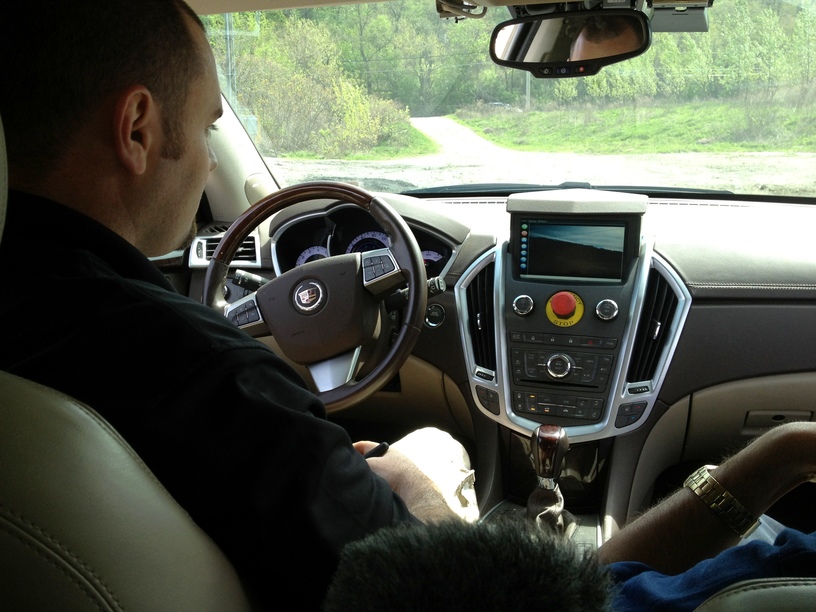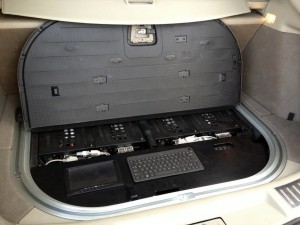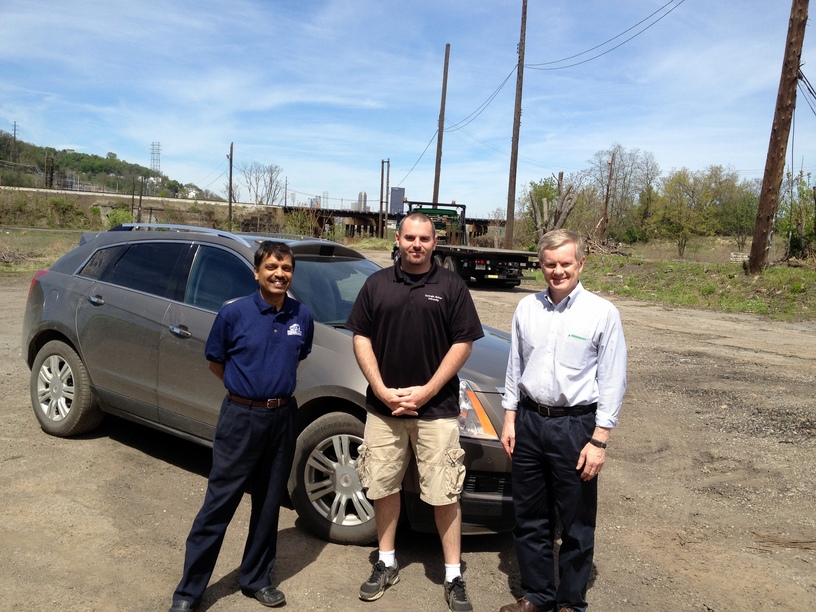Baby, You Can Program My Car (Ep. 128)
[omny:https://traffic.omny.fm/d/clips/aaea4e69-af51-495e-afc9-a9760146922b/14a43378-edb2-49be-8511-ab0d000a7030/2deba8d8-c84e-4f22-950a-ab0d0019dcbe/audio.mp3]

Out for a ride with Jarrod Snider of Carnegie-Mellon’s autonomous-driving lab: “The throttle, the brake, the steering wheel, the turn signals — everything is being controlled by a computer right now. I’m just sitting here.”
Our latest Freakonomics Radio on Marketplace podcast is called “Baby, You Can Program My Car.” Yes, it’s about driverless vehicles. (You can download/subscribe at iTunes, get the RSS feed, listen via the media player above, or read the transcript here.)
I recently had the good fortune to go for a ridealong in a self-driving Cadillac SRX4 with three of the engineers responsible for making it go: Raj Rajkumar, John Dolan, and Jarrod Snider, all key players in the General Motors-Carnegie Mellon Autonomous Driving Collaborative Research Lab. We rode around a large track that the university has built on the site of an abandoned steel plant in Pittsburgh.

The car’s computers, housed where the spare tire would otherwise be stowed.
What was most remarkable, to me at least, was how unremarkable it felt to ride in a vehicle that no one was steering or braking. In other words, it felt normal — not like a science experiment or a rocket ride — and, as amazing a feat of engineering as a driverless car is, I also realized how much of the technology to go driverless already exists in the modern cars we’ve been driving for years (cameras, sensors, automation, etc.).
That said, a lot will have to happen before we live in a world where people don’t do much of their own driving. But I can’t wait! In this podcast, we try to address some of the changes and gains that driverless cars will produce. (Surely there will be complications and downsides as well.) The Economist recently published an excellent summary of a driverless future, much more encyclopedic than this short podcast could cover. (See also a 19-year-old Romanian driverless inventor and the latest in Israeli driverless technology.) I guess we will have to come back for a longer episode.
To me, the largest potential gain by far is in lives not lost. While there have been heroic gains in auto safety over the decades, there are still about 34,000 traffic deaths a year in the U.S., and more than 1 million worldwide. In the U.S., traffic accidents send more than 2 million adults to the E.R. each year — and of course the economic impact is massive as well.
There are some things that computers will never do as well as humans. Driving is probably not one of them — especially since about 80 percent of drivers rate themselves above average.

The men who make the driverless car go (left to right): Raj Rajkumar, Jarrod Snider, and John Dolan.

Comments